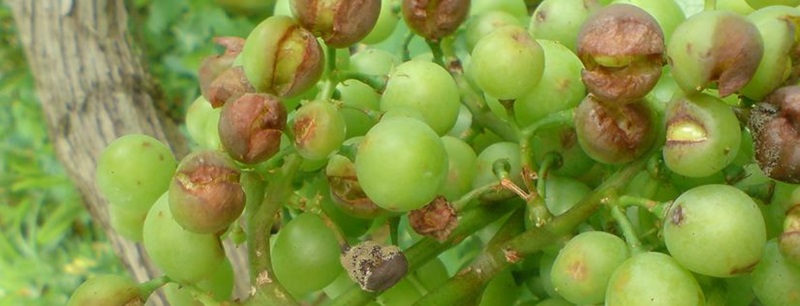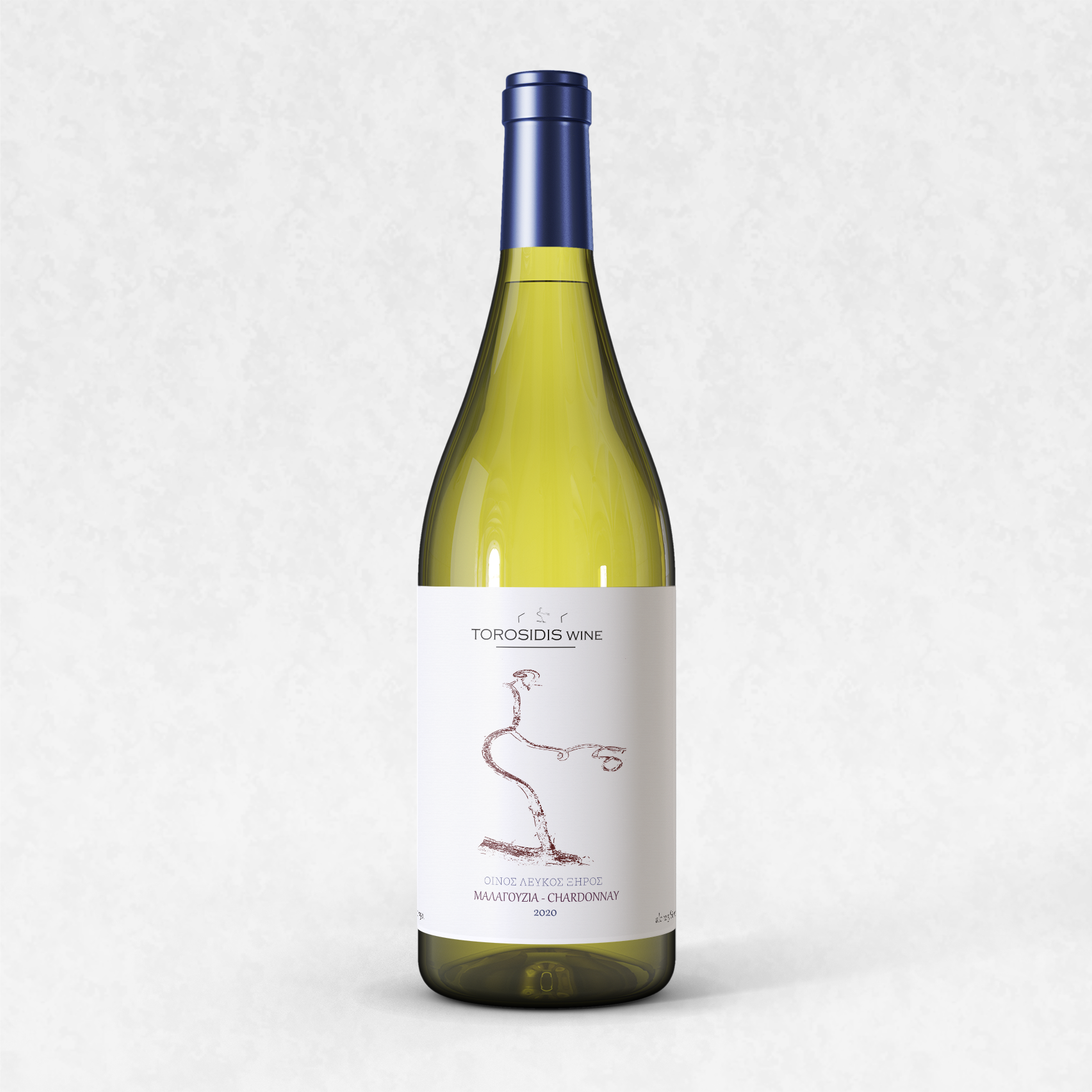Grapevine Botrytis cinerea epidemiology
Written by torosidiswine
Botrytis cinerea infestation can be devastating to many crops when conditions are favourable for disease progression. Although several plant protection products have been developed, botrytis losses are still significant.
At the same time, the increasing sensitivity of consumers to the adverse effects of synthetic plant protection products on human health and the environment, together with zero tolerance to residues from many markets, leads to the restriction of their use.
Similarly, in the context of organic farming that has been developing rapidly in recent decades, the use of chemical plant protection products is absent.
In order for production to be maintained at satisfactory levels under these plant protection conditions, excellent knowledge of the epidemiology of the disease is required.
Conidia, which are produced late winter and early spring by wintering mycelium or sclerotia in host tissues or soil, are considered responsible for the primary infections caused by botrytis in spring. There are many hosts of botrytis. Over 200 species have been found to be the source of primary botrytis contamination (Sutton et al., 1991).
It has been found that in areas characterized by fruit and vegetable production, conidia of B. cinirea constitute a significant percentage of the air microflora (Bisiach et al., 1984).
During spring, insects can also act as carriers of primary infection for botrytis. There are also reports of the existence of warehouses in the vineyard, but these are rare.
It was found that the mycelium of B. cinerea survived for 30 weeks in vine pruning, with its preservation significantly affected by applied weed destruction practices and prevailing temperatures (Thomas et al., 1983).
It has been found that in areas characterized by fruit and vegetable production, conidia of B. cinirea constitute a significant percentage of the air microflora (Bisiach et al., 1984).
In the context of organic farming that has been developing rapidly in recent decades, the use of chemical plant protection products is absent.
In order for production to be maintained at satisfactory levels under these plant protection conditions, excellent knowledge of the epidemiology of the disease is required
.

Epidemiological studies have shown that there is a significant relationship between the infestation of aged flower tissues in spring and the progression of the disease during harvesting and storage. This makes flowering very important for the development and epidemiology of the disease.
Vine flowers, during aging, are particularly susceptible to infection by botrytis (Jersch et al., 1989). The increased sensitivity to botrytis of vine flowers may also be contributed by limited resveratrol synthesis (Keller et al., 2003).
Generally, attacks during flowering cause latent infections in immature fruits (Williamson, 1994), but all infected fruits during harvest are not explained by infections during flowering and latent infections.
The attack on the pole and ovary by the conidia begins with the infection of the tissues of the stylus followed by the slow growth of mycelial hyphae inside the ovary, where eventually the botrytis enters a latent phase. As the host’s defenses decrease, which usually coincides with ripening, botrytis completes its growth and causes rot in the fruit.
In the vine, stigma attack during the early stages of the growing season was considered to be the most common route for fruit infection (McClellan and Hewitt, 1973; Nair and Parker, 1985; Nair and Hill, 1992).
In some wine-producing regions, pole contamination is considered less significant, although fruit rot was found as a result of latent infections in the pole detachment zone (Pezet and Pont, 1986; Holz et al., 2003)
In other areas, these infections are considered important for the epidemiology of botrytis (Keller et al., 2003).
In favorable conditions, the reactivation of botrytis in the tissues of the pole leads to the production of conidia and therefore to the creation of additional sources of infection for the attack of the remaining aged and necrotic stamens.
The role of other flower organs beyond the pole was further investigated.
Infections from the stamens and/or petals and the growth of mycelial hyphae through the floral tissues to the calyx, cause latent infections that develop very aggressively during fruit ripening.
In grapes, histological studies have shown that botrytis infects the stamens, progresses basipetally to infect the calyx and then grows systemically towards the peduncle and duct tissue of the rails (Pezet and Pont, 1986).
Botryte infections from rail feet have been confirmed. The branches of the herb and to a lesser extent the back are also sensitive in the early stages of the development of the rails, but their resistance to infections increases over time (Holz, 2001).
The point of adhesion of the rail to the peduncle shows the highest percentage of botrytis infections. The stomata and cataphractic cells are considered the entry point for botrytis infections in the feet and back (Holz et al., 2003).
A significant proportion (76 out of 90%) of rail infections started at the point of contact between the rail and the foot (Michailides et al., 2000b).
In grapes of the Red Globe table variety, it was found that the most significant post-harvest infestations resulted from infections that occurred at the beginning of flowering and during full bloom (Michailides et al., 2000b, c).
Experimental data from vineyards around the world confirm the importance of flower infections in the epidemiology and progression of the disease. For example, a single application with a botrycide towards the end of flowering managed to reduce by 78% the percentage of affected grapes at harvest (Viret and Keller, 2000).
In any case, the potential for botrytis infection is many, and infections caused by conidia in ripe fruit in the later vegetative stages are as important as latent infections of green tissues at the beginning of the growing season (Wilcox, 2002).
Floral residues that remain in the grape are attacked and colonized extensively by botrytis. There the fungus surpasses the conditions of summer saprophytic, without causing obvious symptoms in the fruit, as during this period the natural defense of the rails is maintained at high levels. However, from veraison onwards the resistance mechanisms of the rails are bent, and as the rails mature the saprophytic mycelium is reactivated, providing sufficient contamination to cause severe damage to the fruit (Keller et al., 2003).
The infected floral tissues that remain in the grape are a remarkable source of mycelium. However, the evolution of this mycelium differs significantly between cultivated grape varieties. Remains of stamens, flowers, rails, covers, helices and pieces of leaves are often trapped in the grape. It was found that botrytis contamination of these residues ranged between 13 and 72%, indicating that, in direct contact with the growing rails, there is significant contamination in the grape before it is “closed” (Seyb et al., 2000a).
As the plant’s defense mechanisms weaken, symptoms appear, new conidia are produced and dispersed in the environment causing new infections. In vineyards all over the world, the maximum conidia content of air occurs during flowering, veraison and ripening (Vercesi and Bisiach, 1982).
Thus, when ripening begins there is plenty of contamination to cause new infections in vegetation and fruits.
Source : EPIDEMIOLOGY OF BOTRYTIS CINEREA IN ORCHARD AND VINE CROPS.Elad et al. (eds.), Botrytis: Biology, Pathology and Control, 243-272.© 2007 Springer.
Our Wines
Shop

Related Articles
Related
Κριτήρια προτεραιότητας για τη χορήγηση αδειών φύτευσης αμπελιού
Προκειμένου να χορηγηθούν οι άδειες νέας φύτευσης εφαρμόζονται κριτήρια προτεραιότητας όπως αυτά έχουν επιλεγεί για την κάθε περιφέρεια κάθε αγροτεμάχιο λαμβάνει βαθμολογία στο κάθε κριτήριο με βάση τον συντελεστή βαρύτητας W και τον συντελεστή συμμόρφωσης Pt. Η...
Αιτήσεις για άδειες φύτευσης αμπελιού για το 2024
Οι ενδιαφερόμενοι για την απόκτηση αδειών νέας φύτευσης οινοποιήσιμων ποικιλιών αμπέλου, υποβάλουν ηλεκτρονικά, μέσω της Ψηφιακής Υπηρεσίας Υποβολής Αιτήσεων Αδειών Νέων Φυτεύσεων της ιστοσελίδας του ΥΠ.Α.Α.Τ, αίτηση- υπεύθυνη δήλωση από την 1 Σεπτεμβρίου μέχρι και...
Until 20 November 2023, applications for the restructuring and conversion of vineyards of the 2023-2024 wine year.
The period of application of the intervention for restructuring and conversion of wine-growing areas in our country concerns the wine year 2023-2024.The intervention shall cover one or more of the following actions: (a) varietal conversion of vineyards, including...
